Understanding plurals Worksheets for 6-Year-Olds
4 filtered results
-
From - To
Introducing our "Understanding Plurals Worksheets for 6-Year-Olds," thoughtfully designed to make learning plurals enjoyable and effective. These colorful, engaging worksheets help young learners grasp the concept of singular and plural forms through various activities, including matching, coloring, and word association. Ideal for first graders, our printable resources support reading skills and vocabulary development while promoting critical thinking. Whether used in classrooms or for at-home practice, these worksheets provide a solid foundation in grammar, making learning a fun and interactive experience for children. Explore our collection to enhance your child's language skills creatively and confidently!
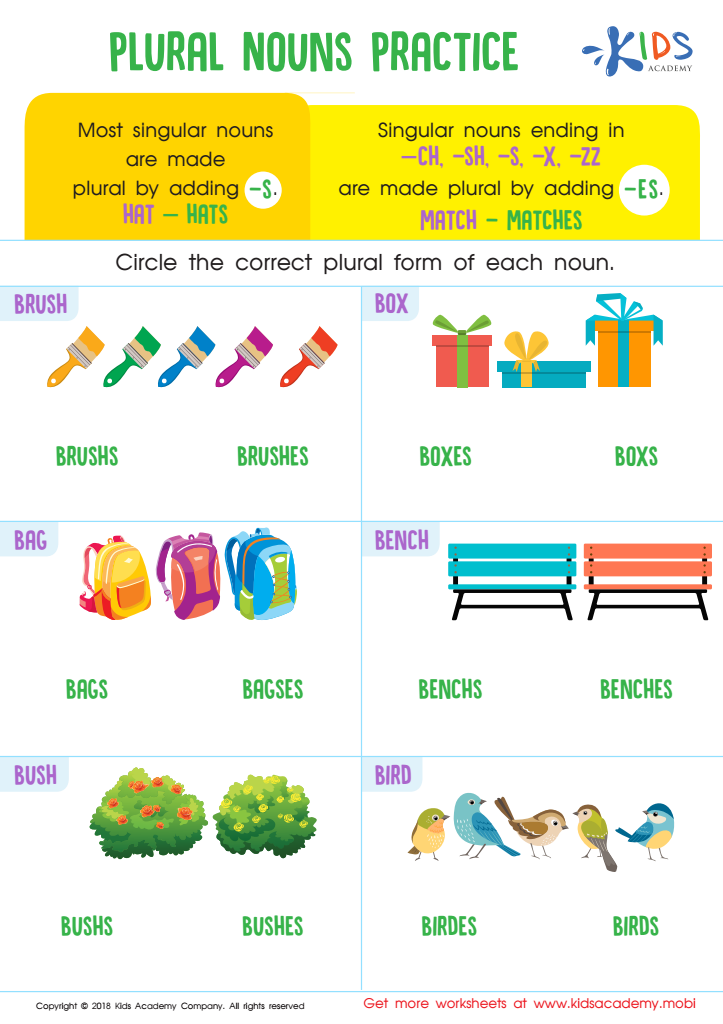

Plural Nouns Practice Worksheet
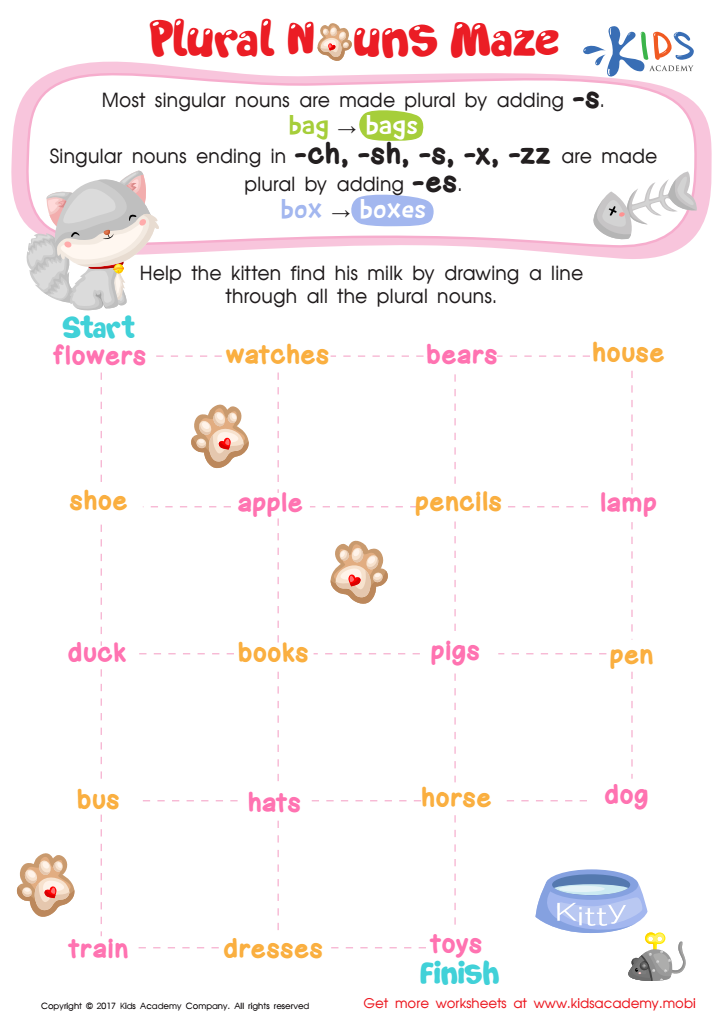

Plural Nouns Maze Worksheet
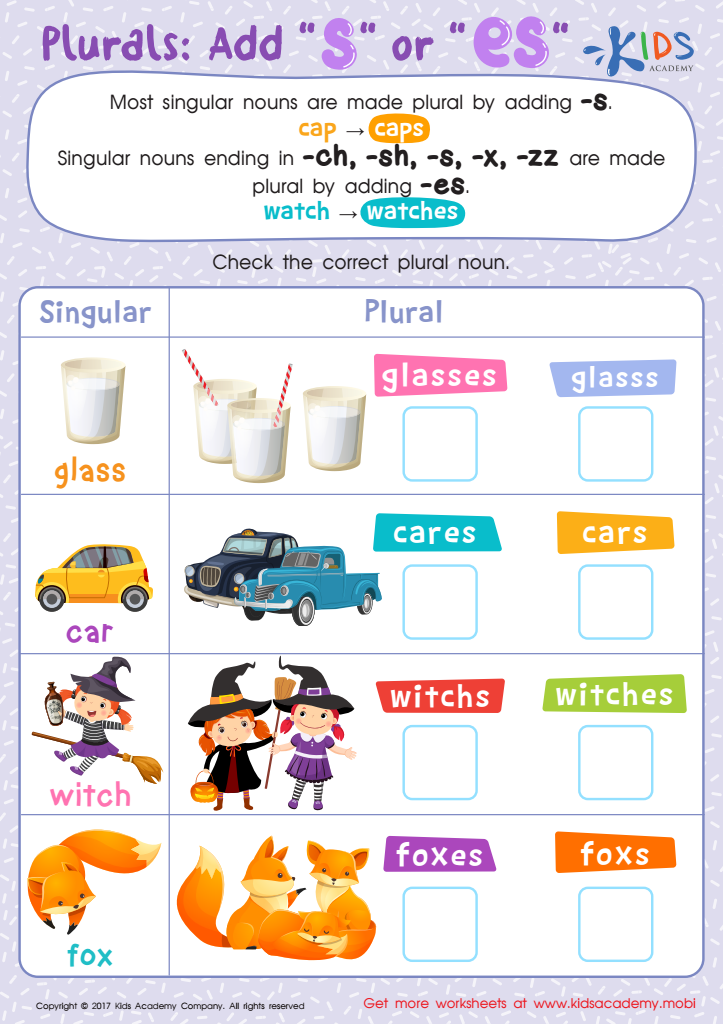

Plurals: "–es" or "–es"? Worksheet
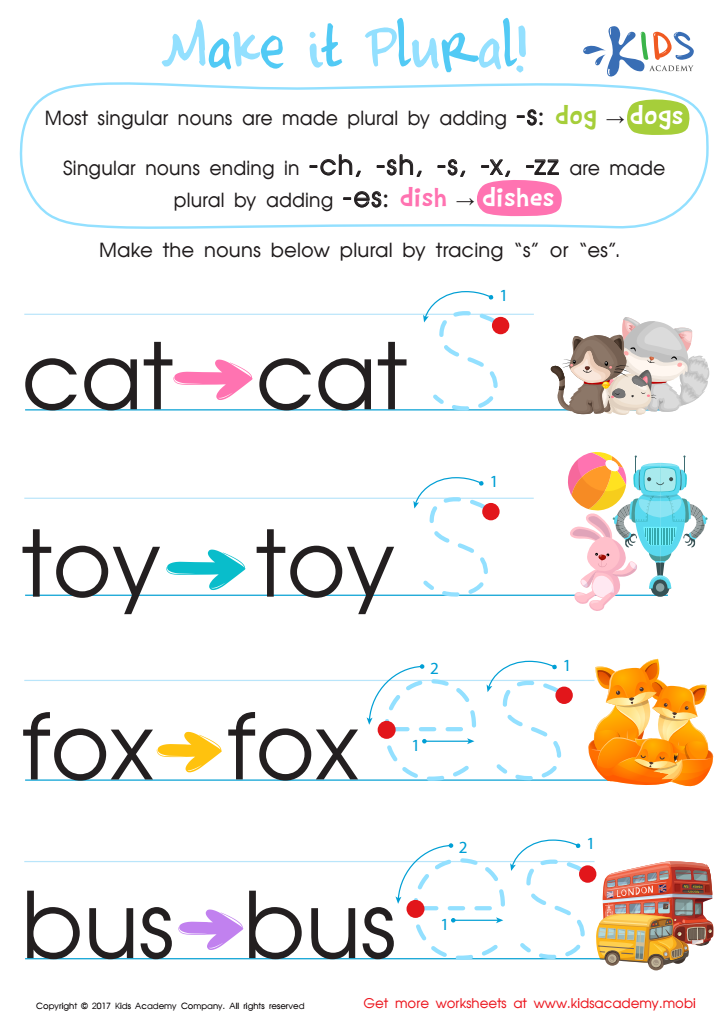

Make it Plural Worksheet
Understanding plurals is an important milestone for 6-year-olds as it lays a foundation for effective communication and literacy skills. Plurals refer to the way in which we indicate that there is more than one of something, typically by adding "s" or "es" to the end of a word (e.g., "cats," "buses"). Mastering plurals facilitates comprehension and use of nuanced language structures that are crucial for expressing ideas clearly and accurately.
For parents and teachers, paying attention to a child's grasp of plurals can provide insight into their language development. It helps ensure that children are on track with their grasp of key grammatical rules, which are pivotal for reading and writing proficiency. Moreover, understanding plurals also supports vocabulary expansion, as children learn to categorize and describe multiple items, fostering more detailed and interesting conversations.
Engaging with plurals can be fun and interactive, enhancing children's overall interest in language and learning. Simple activities like reading books, singing songs, or playing games that emphasize plural usage can reinforce this concept in an enjoyable manner. Hence, cultivating an understanding of plurals at an early age equips children with essential tools for academic success and effective communication in their everyday lives.

 Assign to My Students
Assign to My Students



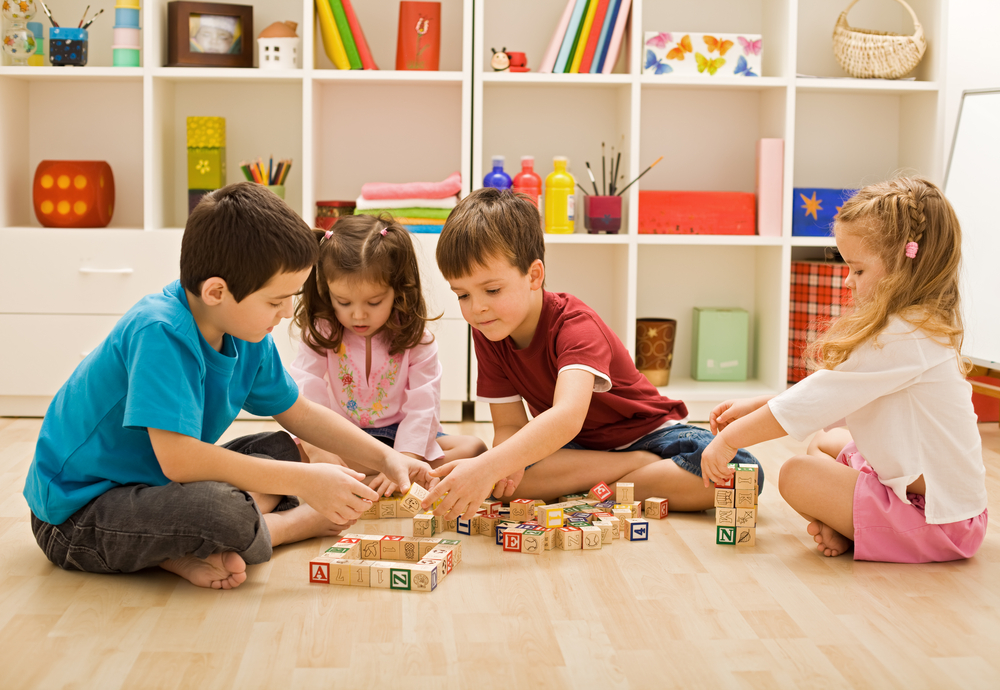
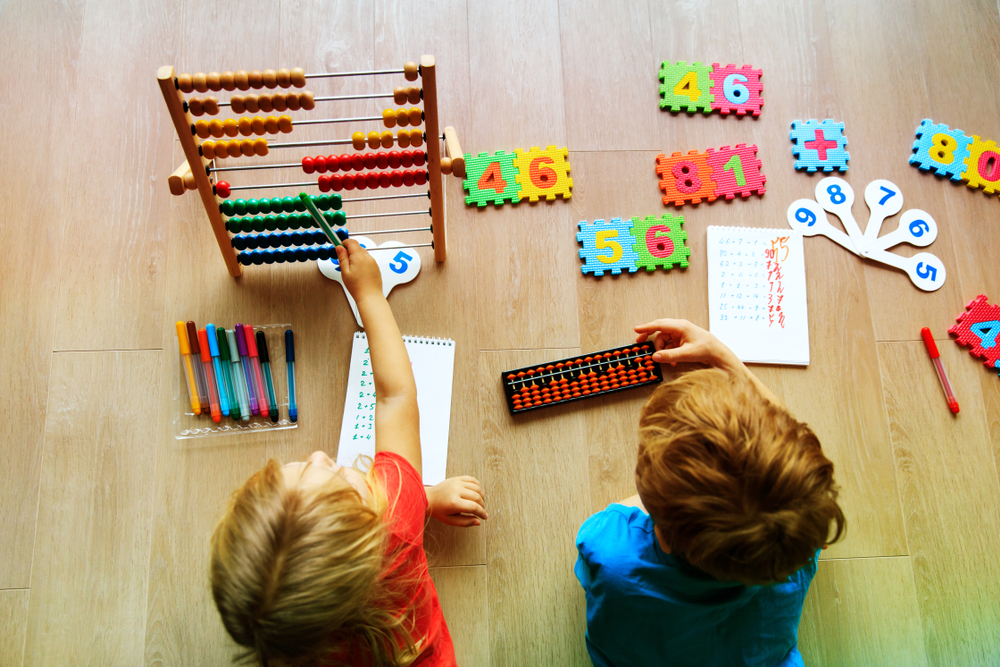
.jpg)









